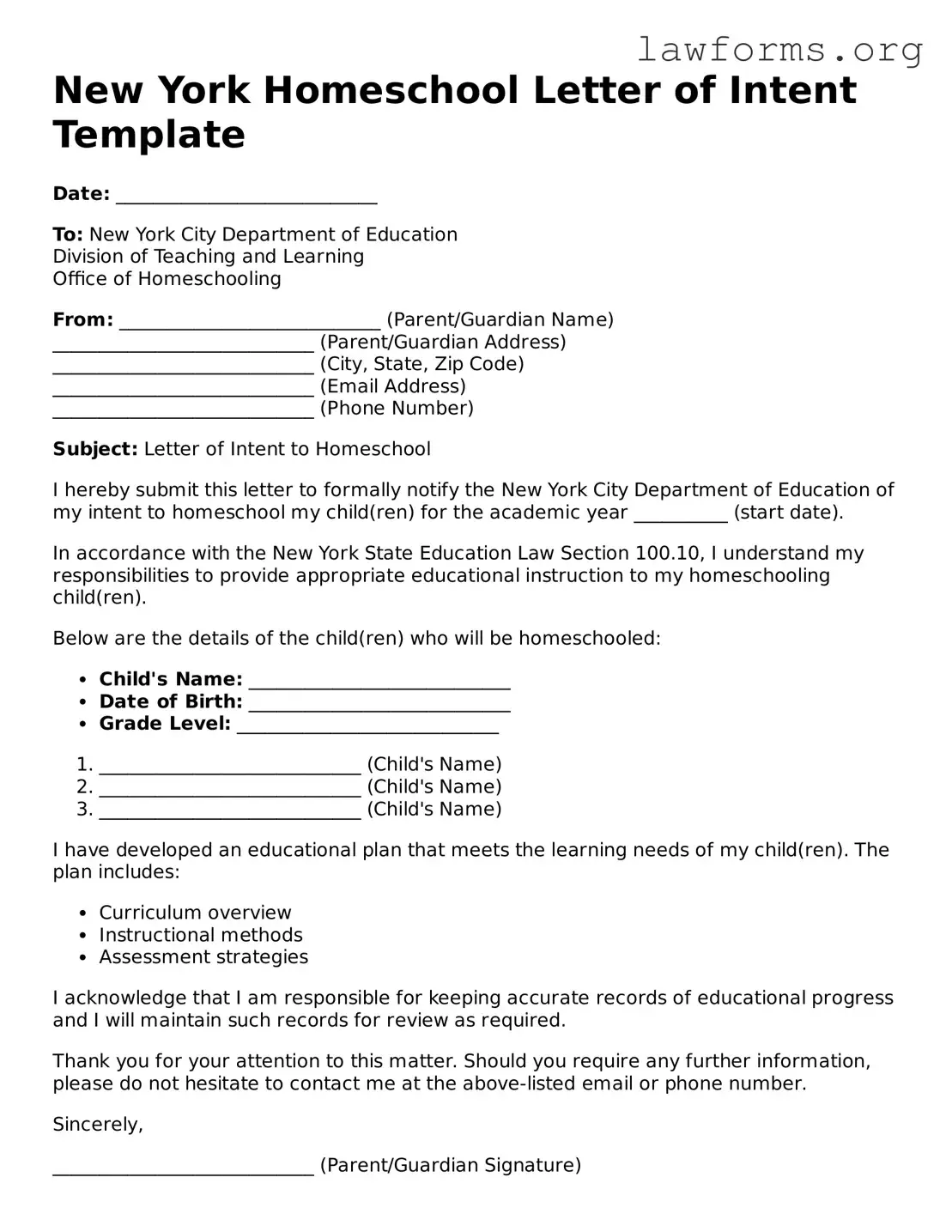New York Homeschool Letter of Intent Template
Date: ____________________________
To:
New York City Department of Education
Division of Teaching and Learning
Office of Homeschooling
From:
____________________________ (Parent/Guardian Name)
____________________________ (Parent/Guardian Address)
____________________________ (City, State, Zip Code)
____________________________ (Email Address)
____________________________ (Phone Number)
Subject: Letter of Intent to Homeschool
I hereby submit this letter to formally notify the New York City Department of Education of my intent to homeschool my child(ren) for the academic year __________ (start date).
In accordance with the New York State Education Law Section 100.10, I understand my responsibilities to provide appropriate educational instruction to my homeschooling child(ren).
Below are the details of the child(ren) who will be homeschooled:
- Child's Name: ____________________________
- Date of Birth: ____________________________
- Grade Level: ____________________________
- ____________________________ (Child's Name)
- ____________________________ (Child's Name)
- ____________________________ (Child's Name)
I have developed an educational plan that meets the learning needs of my child(ren). The plan includes:
- Curriculum overview
- Instructional methods
- Assessment strategies
I acknowledge that I am responsible for keeping accurate records of educational progress and I will maintain such records for review as required.
Thank you for your attention to this matter. Should you require any further information, please do not hesitate to contact me at the above-listed email or phone number.
Sincerely,
____________________________ (Parent/Guardian Signature)
